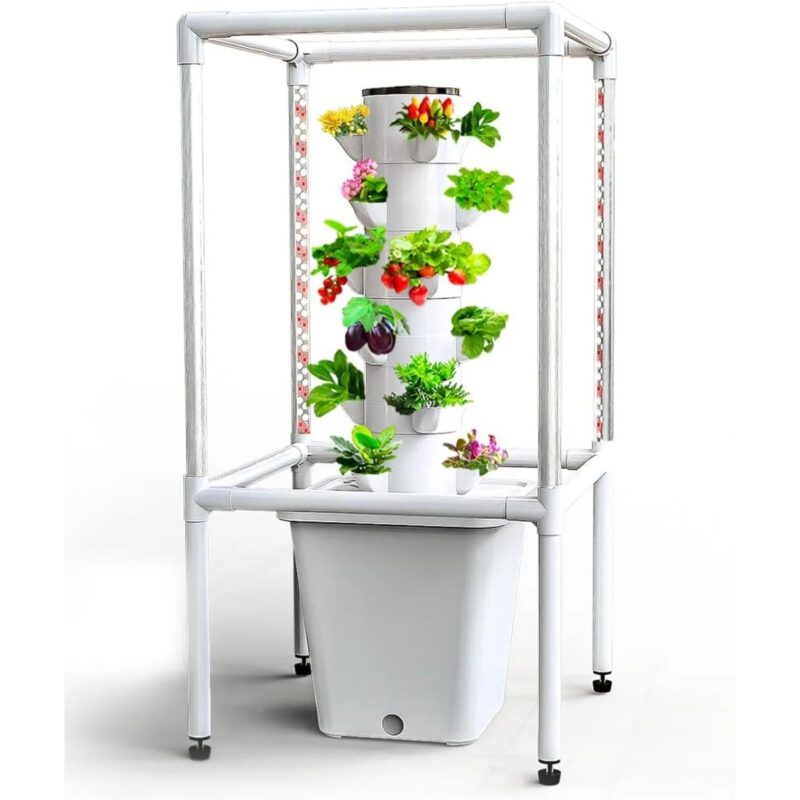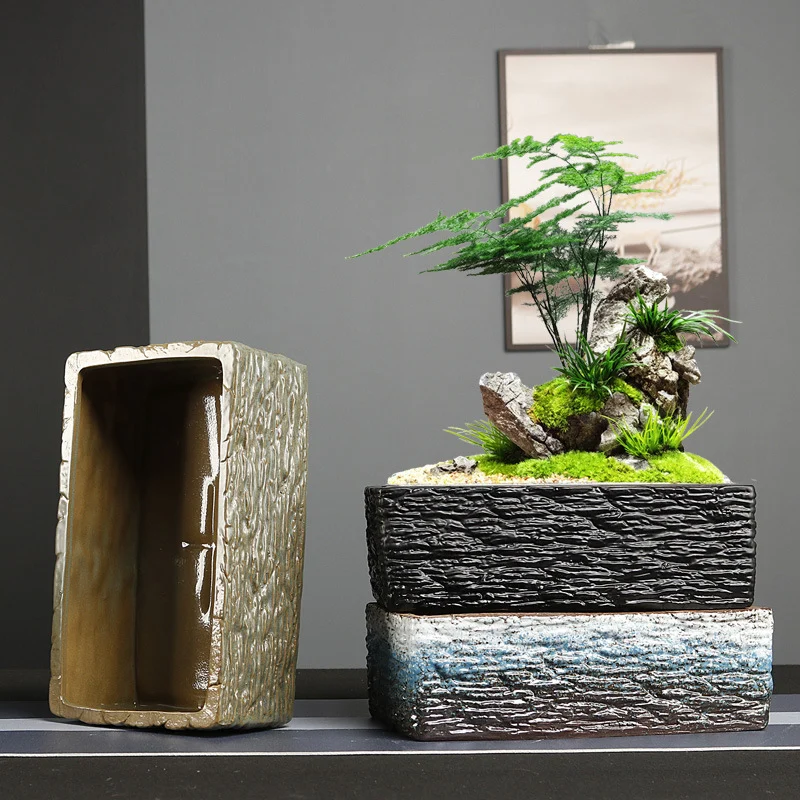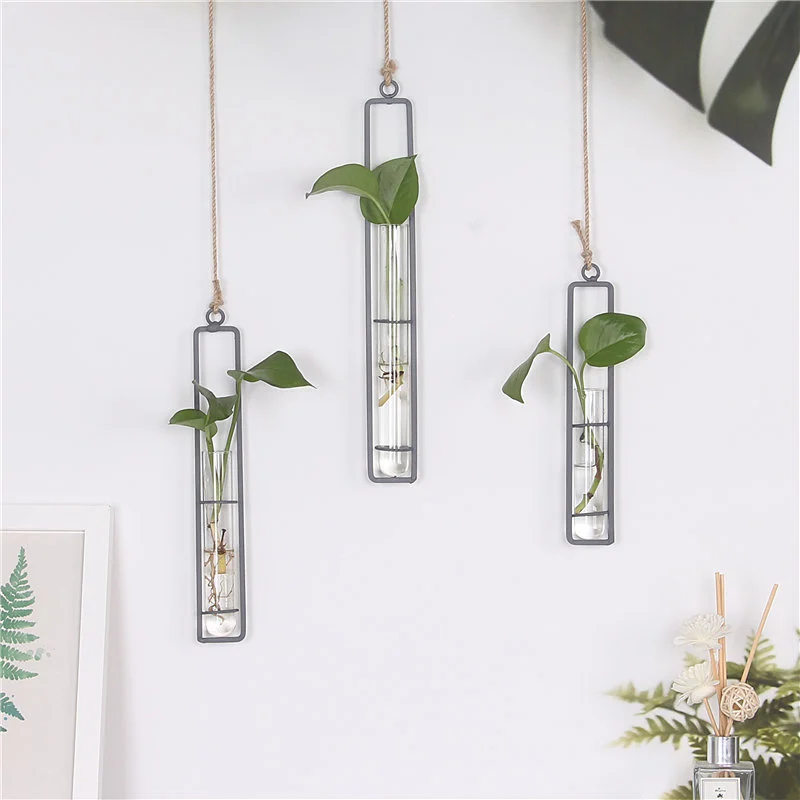How To Build A Space-Saving Hydroponic Indoor Vegetable Garden For Urban Dwellers?
Maximize Your Space: Building the Perfect Indoor Vegetable Garden for Urban Living
Space. It’s the Holy Grail in urban settings. Growing your food? Seems out of reach. But hold the phone! Hydroponic gardening can turn even the tiniest city apartment into a green paradise of your own.
Hydroponics 101: Soil-Free Growing Mysteries Unveiled
Hydroponics skips the dirt and goes straight to the nitty-gritty—water and nutrients.
Imagine feeding your plants a tailored cocktail directly at their roots.
It’s like having a butler serve them every meal—all the nutrients, none of the mess.
Since soil is out of the picture, hydroponic systems can be compact enough to fit anywhere: windowsills, kitchens, and even under your bed if you’re committed.
Picking Your Hydroponic Weapon of Choice
Ready to jump in?
Kick-off by picking the right hydroponic system. Here are your choices:
- Deep Water Culture (DWC): Roots hang in a nutrient bath 24/7. It’s like a VIP spa for your plants.
- Ebb and Flow: This one mimics nature, flooding, and draining nutrient solutions as needed.
- Nutrient Film Technique (NFT): A shallow river of goodness flows over your plant roots constantly.
- Aeroponics: Imagine a fine mist of nutrients caressing the plant roots suspended in the air. High-tech and space-efficient.
Your choice should gel with your available space and veggie aspirations.

Mastering Space-Saving Techniques
Do you have a tiny footprint? No problem.
Hydroponics lets you think vertically.
Stack your plants on shelves, hang ’em on walls, and even repurpose old furniture.
Think of it as your green skyscraper.
The trick is to get creative and find ways to squeeze life into every nook and cranny.
For instance, you might want to consider the Large Tank Hydroponic Growing Indoor 12 Pod System. It’s perfect for making the most of those cramped city spaces.
Pick Your Produce Wisely
Deciding what to grow is like drafting your fantasy football team.
You want winners, and here’s a roster of worthy picks:
- Leafy greens (lettuce, spinach, kale)
- Herbs (basil, mint, cilantro)
- Tomatoes (cherry or dwarf types)
- Peppers (compact bell or chili)
- Microgreens (tiny but mighty)
Choose fast-growers and space-savvy varieties to keep the fresh produce flowing, regardless of the weather.
Hydroponic Maintenance: Keeping the Engine Running
Keeping your hydroponic garden flourishing involves regular check-ups.
You need to monitor pH levels, tweak nutrient doses, and make sure water flows smoothly.
Keep an eye out for pests and diseases—prevention is worth a pound of cure!
Lighting matters too.
Good lighting can mean the difference between a lush plant and a sad sprout.
You might want to check out an Indoor Gardening & Hydroponics: 15 Pod LED Kit for efficient lighting and thriving greens.
Urban Gardening Bliss Awaits
Rolling up your sleeves and diving into hydroponics gives more than just tasty veggies.
It’s about reconnecting with nature, even in the concrete jungle.
You’ll relish every leaf and tomato, knowing you grew them yourself.
Plus, it’s a big step towards urban sustainability, reducing reliance on far-flung supply chains filled with pesticides.
Maximize Urban Garden Yields: Innovative Tricks for Small Spaces
Urban jungles are on the rise. So how do you grow fresh produce in a shoebox-sized apartment?
You innovate and strategically plan to turn tiny spaces into green havens.
Why Hydroponics Rocks
Hydroponics stands for low space and high yield. Think of nutrient solutions and growing media instead of soil.
This means max output per square inch.
Plus, no need for constant watering or worrying about soil quality. Minimal water use, no pesticides, and it’s year-round. Win-win.
Choosing Your Hydroponic Gear
Think of picking your hydroponic system like choosing weapons before battle. Each has its specialty:
| System Type | Advantages |
|---|---|
| Ebb and Flow | Easy setup, versatile for many plant types |
| Nutrient Film Technique (NFT) | Great for small spaces, ideal for leafy greens and herbs |
| Vertical Towers | Exploits vertical space, perfect for tiny areas |
| Aquaponics | Hybrid system with fish, creating a self-sustaining ecosystem |
Which Fits Your Space, Budget, and Plant Wishlist Best?
Research before picking. Select a setup that fits your needs, space, and budget. And aligns with your plant wishlist.
Designing a Space-Efficient Layout
Vertical gardening should be your go-to.
Shelves, wall mounts, whatever you have.
Plan around how big your plants will get, how much light they need, and how easy they’ll be to care for.
Customize your layout to fit everything perfectly.
Hydroponics Know-How: The Basics
Hydroponics isn’t set-and-forget.
It’s a bit like owning a puppy—it needs regular love and attention.
Keep tabs on pH levels, nutrient mixes, and water circulation.
Proper light matters too, whether it’s sunlight or grow lights.
Fine-tune your setup through trial and error. Find the sweet spot.
If you’re keen on sustainability, combine your hydroponic setup with the Best Kitchen Compost Machine. Turn food waste into compost and close the loop.
Finding Room to Grow More
As your green thumb gets greener, dream big.
Expand with vertical towers or try aquaponics.
Choose speedy growers among veggies and herbs for constant, fresh supplies.
Conclusion: Crafting Urban Green Havens
City living doesn’t exclude homegrown produce.
Hydroponic indoor gardens carve out green spaces in urban jungles.
It’s a game-changer, giving you control over water, nutrients, and light—guaranteeing bountiful harvests.
Hydroponic systems make even countertops and walls productive growing spaces.
Transform tight apartments into veggie plots with careful design and creativity.
This approach not only optimizes space and yield but deepens your connection with nature and self-sufficiency.
Hydroponics empowers urbanites to grow food efficiently in crowded areas.
This green revolution makes city life productive and sustainable.
Embrace technology and nature’s resilience—change your urban jungle into a thriving indoor garden.
Key Takeaways
- Hydroponics skips soil, delivering nutrients via water, allowing for space-efficient gardening in urban areas.
- Vertical gardening maximizes the use of limited space with shelves, wall mounts, and old furniture repurposing.
- Choose compact, fast-growing plants like leafy greens, herbs, cherry tomatoes, compact peppers, and microgreens.
- Regular maintenance of pH levels, nutrient dosages, and lighting is critical for a thriving hydroponic garden.
- Hydroponic systems empower urban dwellers to grow their fresh produce, promoting sustainability and self-sufficiency.
Here’s a reference section formatted in Markdown:
References
- How to Build an Indoor Hydroponic Vegetable Garden. Retrieved from Dengarden.
- Hydroponics: The Power of Water to Grow Food. Retrieved from Harvard SITN.
- NASA Research Launches a New Generation of Indoor Farming. Retrieved from NASA Spinoff.
FAQs
What are the best vegetables to grow in an indoor hydroponic system?
Leafy greens like lettuce, spinach, and kale are excellent choices for indoor hydroponic gardens. Herbs such as basil, cilantro, and mint also thrive in these systems. Compact varieties of tomatoes, peppers, and cucumbers can be successful if you have adequate vertical space and lighting.
How much light do plants need in an indoor hydroponic garden?
Most hydroponic vegetables need 14-16 hours of light per day. Use full-spectrum LED grow lights positioned 6-12 inches above the plants. Set your lights on a timer to ensure consistent light cycles, which is crucial for plant growth and development.
How often should I change the nutrient solution in my hydroponic system?
Generally, you should change the nutrient solution every 2-3 weeks. However, this can vary depending on the size of your system and the types of plants you’re growing. Regularly monitor the pH and nutrient levels, and top up with water as needed between full changes.
What’s the most space-efficient hydroponic system for urban dwellers?
Vertical hydroponic systems, such as tower gardens or wall-mounted systems, are typically the most space-efficient for urban environments. These allow you to grow multiple plants vertically, maximizing your growing capacity in a small footprint.
How can I prevent algae growth in my hydroponic system?
To prevent algae growth, keep your nutrient solution and any exposed parts of the system away from direct light. Use opaque or dark-colored containers for your nutrient solution. Regularly clean your system, and ensure good air circulation. If algae does appear, a diluted hydrogen peroxide solution can help control it without harming your plants.
Table of Contents
On Sale Now
-

Simple Rectangular Stoneware Hydroponic Flowerpot
$51.07Select options This product has multiple variants. The options may be chosen on the product page -

Wrought Iron Glass Hydroponic Vase
$14.71 – $15.62Price range: $14.71 through $15.62Select options This product has multiple variants. The options may be chosen on the product page -

Lawn Sprinkler 360 Degree Automatic Rotating Water Pipe Set
$22.96 – $70.96Price range: $22.96 through $70.96Select options This product has multiple variants. The options may be chosen on the product page -

Automatic Garden Sprinklers 360 Degree Rotation System
$22.96Select options This product has multiple variants. The options may be chosen on the product page